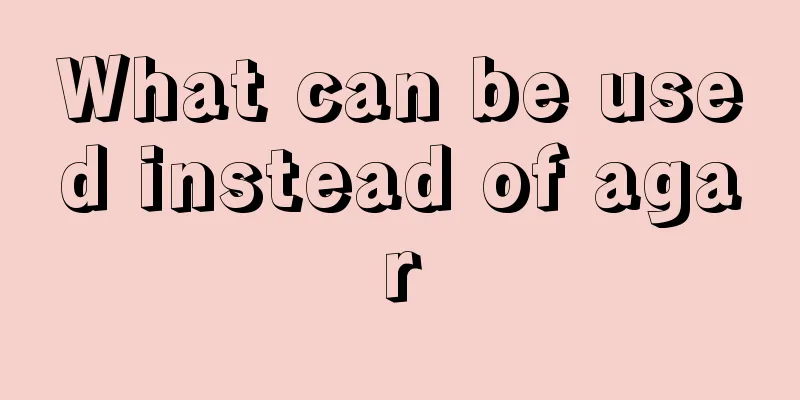Three criteria for choosing a suitable toothbrush

|
A toothbrush is essential for cleaning your mouth and protecting your teeth. Using an inappropriate toothbrush to brush your teeth can easily cause gum damage, bleeding, etc. Dental care requires the use of a toothbrush, and the quality of the toothbrush directly affects the health of teeth and gums. However, how to choose a suitable toothbrush? The following three criteria can be used as a reference when purchasing.
Standard 1: Brush head size varies from person to person 1. When buying a toothbrush, the first thing to look at is the size of the brush head. The doctor said, "The brush head should generally be slightly smaller to ensure that it can rotate flexibly in the mouth. Children's mouths are small, so the brush head needs to be smaller. In general, the size of the brush head should be determined according to each individual's situation, and factors such as mouth size, mouth opening degree, and personal habits need to be considered comprehensively. There is no uniform standard." The American Dental Association recommends that an adult toothbrush should be: the brush head should be about 2.54-3.18 cm long and about 0.79-0.95 cm wide; 2-4 rows of bristles, with 5-12 bundles in each row. However, adults can also choose a children's toothbrush with a brush head that is 2.3 cm long and 0.8 cm wide. 2. Look at the softness and hardness of the bristles. The bristles should be of moderate hardness or slightly soft. But be careful, as bristles that are too soft are difficult to brush clean. In the past, the bristles of brushes were made of pig bristles, which were very hard and easily damaged teeth and gums. They have now been basically eliminated; the current bristles are mostly made of nylon threads. Specifically, it can be divided into two types - ordinary silk and DuPont silk. Dupont silk has good elasticity and is not easy to fall over. 3. Sanding treatment is also important. If the bristles are not rounded after cutting, they can easily become too sharp and cause injury. A toothbrush with rounded bristles can prevent this kind of damage and provide better protection for the gums. 4. Replace your toothbrush every three months. Doctors remind everyone that it is best to replace your toothbrush every 3 months. If the brush is used for too long, bacteria will accumulate on the bristles, which is not good for oral health. People who use Dupont bristles should not fail to replace their toothbrushes just because the bristles have fallen out. 5. Choose a regular straight-handled toothbrush. Whether the brush head is square or diamond-shaped, whether the top edge of the bristles is flat or wavy, or whether the handle is curved or straight, has little effect on the brushing effect. A common straight-handled toothbrush is fine for brushing your teeth.
Standard 2: Electric toothbrushes are suitable for special groups of people Since entering the Chinese market, electric toothbrushes have gradually gained popularity for their convenience and labor-saving features. There are two types of electric toothbrushes: ordinary electric toothbrushes and sonic vibration toothbrushes. It is recommended that the elderly, children or people with limited physical mobility use ordinary electric toothbrushes. However, one should not be too superstitious about the effectiveness of this type of toothbrush. As long as the brushing method is correct, a manual toothbrush can be just as useful as an ordinary electric toothbrush. Relatively speaking, sonic vibration toothbrushes have stronger health care effects. They can flush out food remaining in the teeth through sound waves. This effect includes massage type, whirlwind type, and prodromal type... Faced with a wide variety of toothbrushes on supermarket shelves, many people have this question: "Each toothbrush claims to have unique effects. Which toothbrush is best for me?" In this regard, dentists say: Toothbrushes with smaller brush heads, moderately soft and hard bristles, and ground bristles have the best health care effects.
Standard three: Use interdental brushes to brush between teeth. Teeth have five surfaces in total. The outer side, inner side and bottom surface are easier to brush, but the two surfaces opposite to the adjacent teeth are difficult to brush, and some auxiliary tools are needed - interdental brushes or dental floss. If the gaps between teeth are large, you can use an interdental brush. This is a small brush similar to a bottle brush. The brush head is made of fine nylon wire and stainless steel wire wrapped around it. It can reach into the gaps between teeth and remove residual food. If the gaps between teeth are small, it is not advisable to use interdental brushes. Forcing them in will damage the gums. At this time, dental floss needs to be used. |
<<: Wrong laundry method is harmful to human health
>>: How many correct ways do you know to wash clothes?
Recommend
Orthopedic experts never do these two actions, they are the most harmful to our joints
Currently, there are 360 million people sufferi...
What are the self-examination methods for skin cancer
Compared with other tumors, skin cancer metastasi...
Can sprouted yam still be eaten
Yam is a kind of food with relatively high medici...
Sandals rub the instep
Whether sandals will rub the instep depends mainl...
How to treat chronic bleeding gums?
In real life, gingival bleeding is a common oral ...
Why do I feel itchy all over my body?
Itching is often very unbearable, because if you ...
Is it necessary to go to the hospital for hamartoma?
Is it necessary to go to the hospital for hamarto...
There are itchy bumps on my thighs and buttocks
Having pimples on the thighs and buttocks is emba...
What to do if blisters appear on your hands in hot weather
In hot weather, we usually get small blisters on ...
What is the reason for low thyroid cancer stimulating hormone TSH
Low thyroid cancer stimulating hormone TSH, that ...
Does hair absorb nutrients from the human body?
There is a saying from the ancients: "Your b...
What disease is the pain under the xiphoid process
If you feel pain under your xiphoid process, you ...
What harm does eating rotten eggs do to your body?
Eating rotten eggs can cause obvious food poisoni...
7 kinds of food are most effective in dealing with spring fatigue
Introduction : "Spring sleepiness" is a...
What should liver cancer patients pay attention to in their diet? 8 things to pay attention to in the diet of liver cancer patients
Patients with liver disease often show symptoms s...









